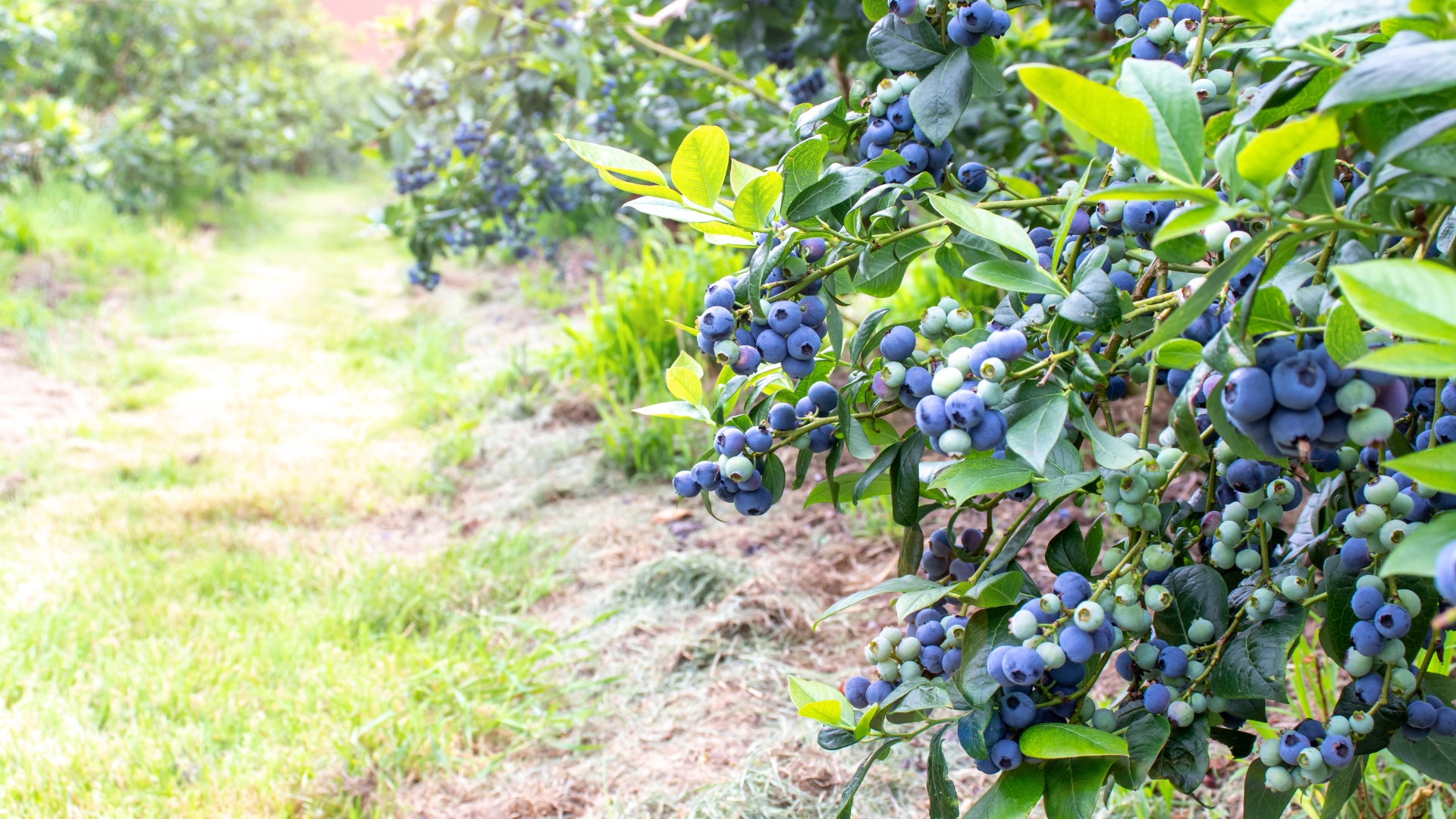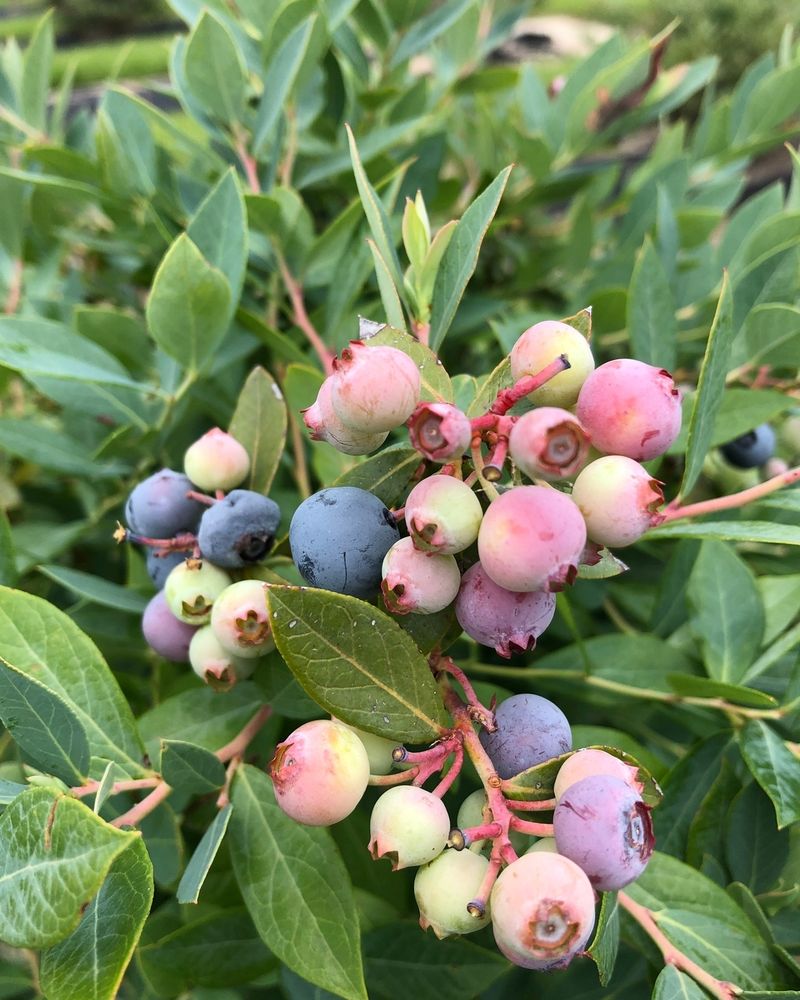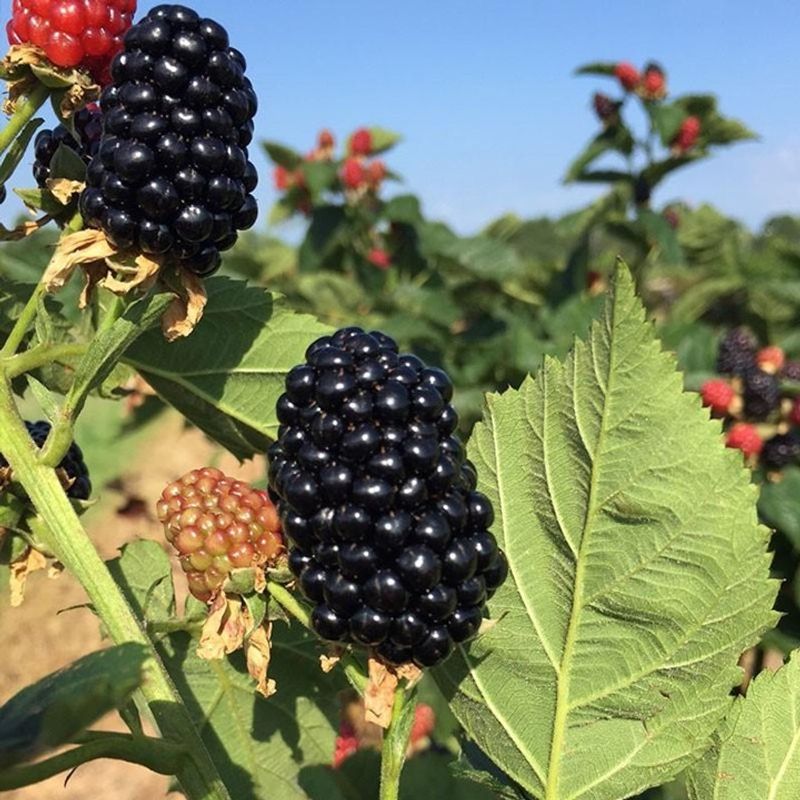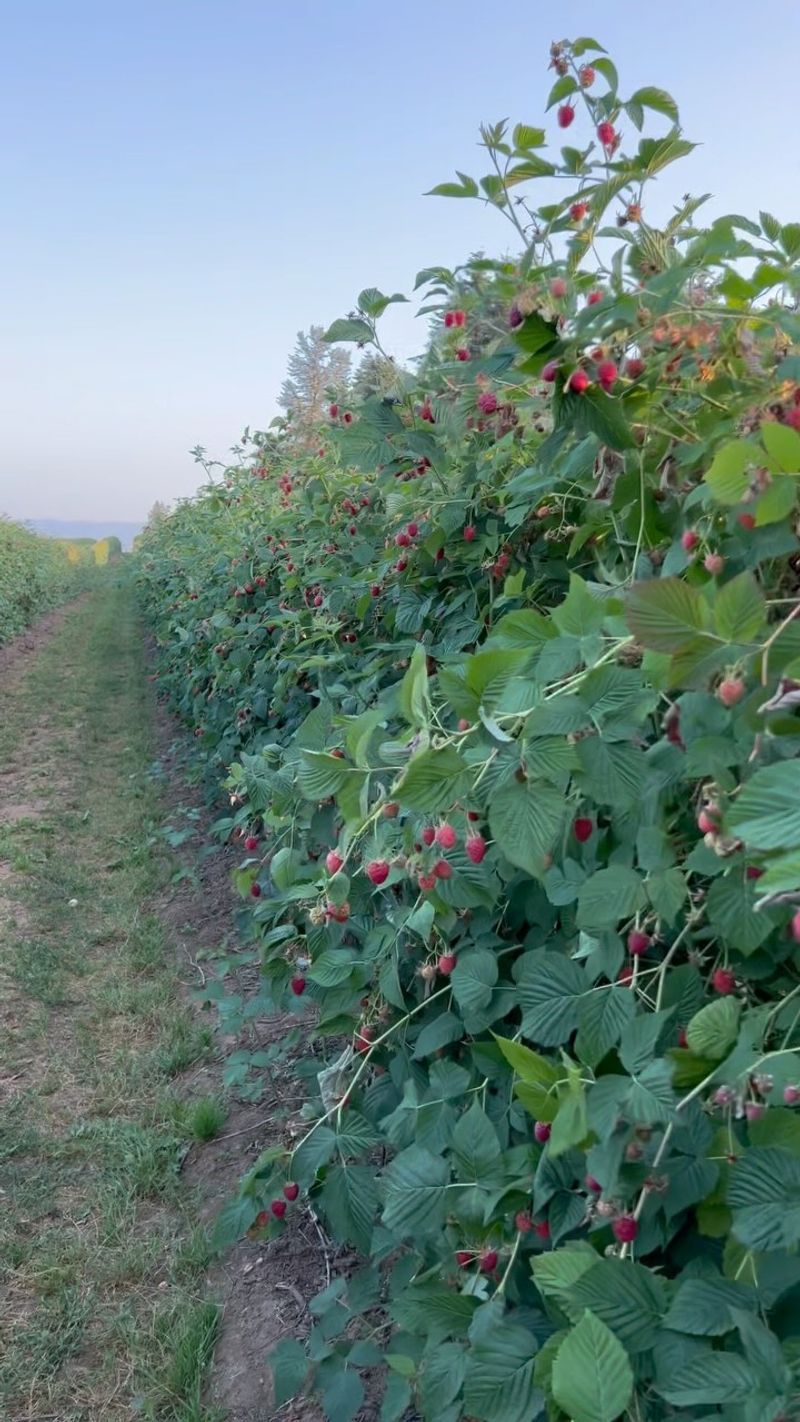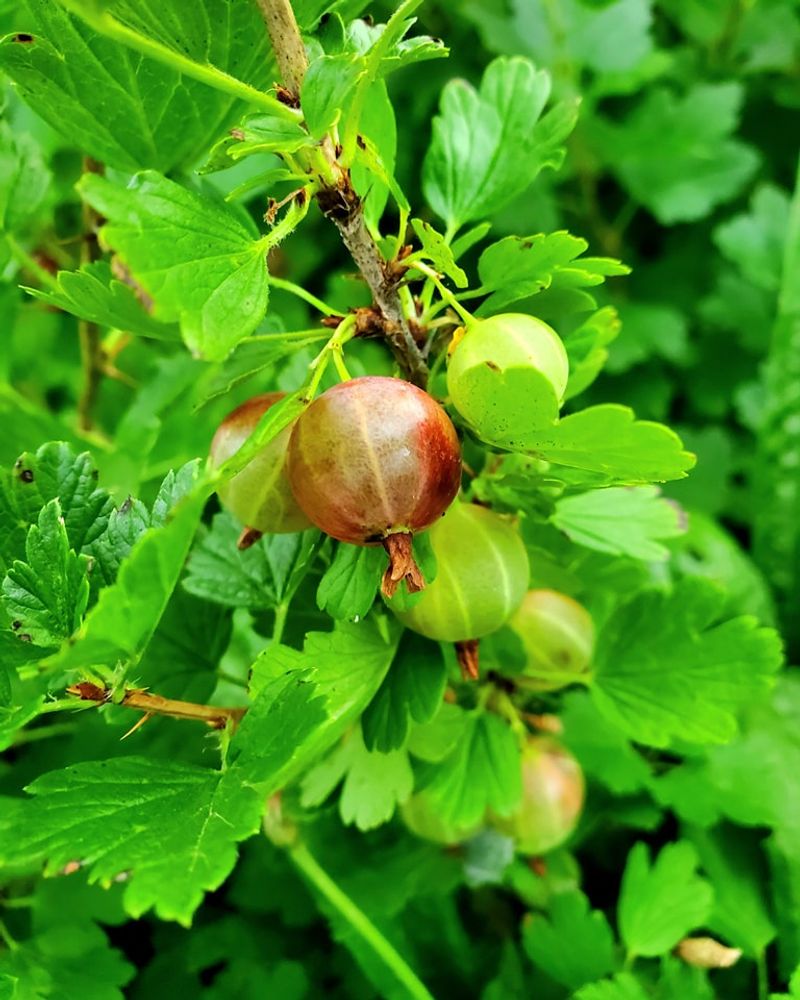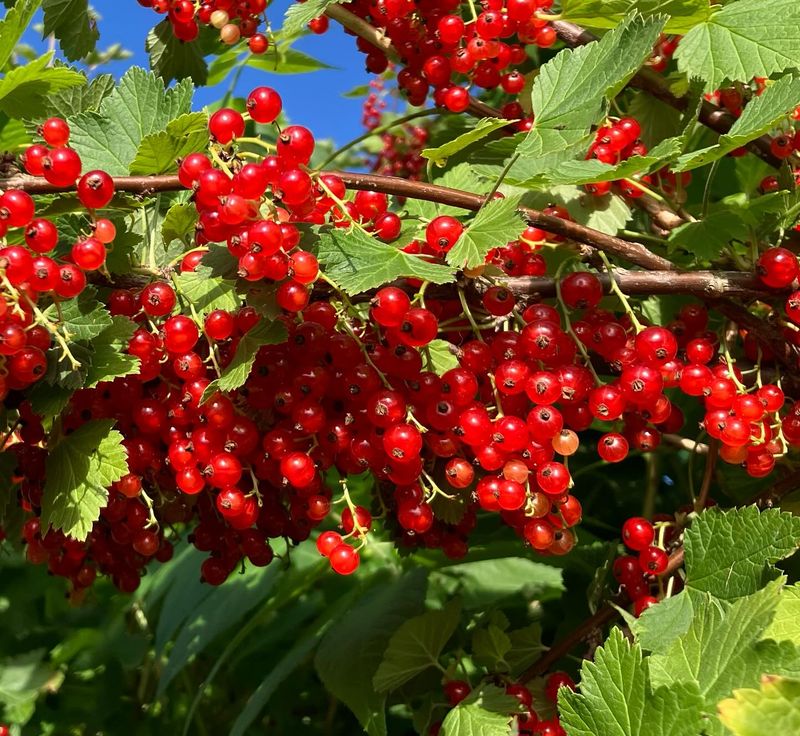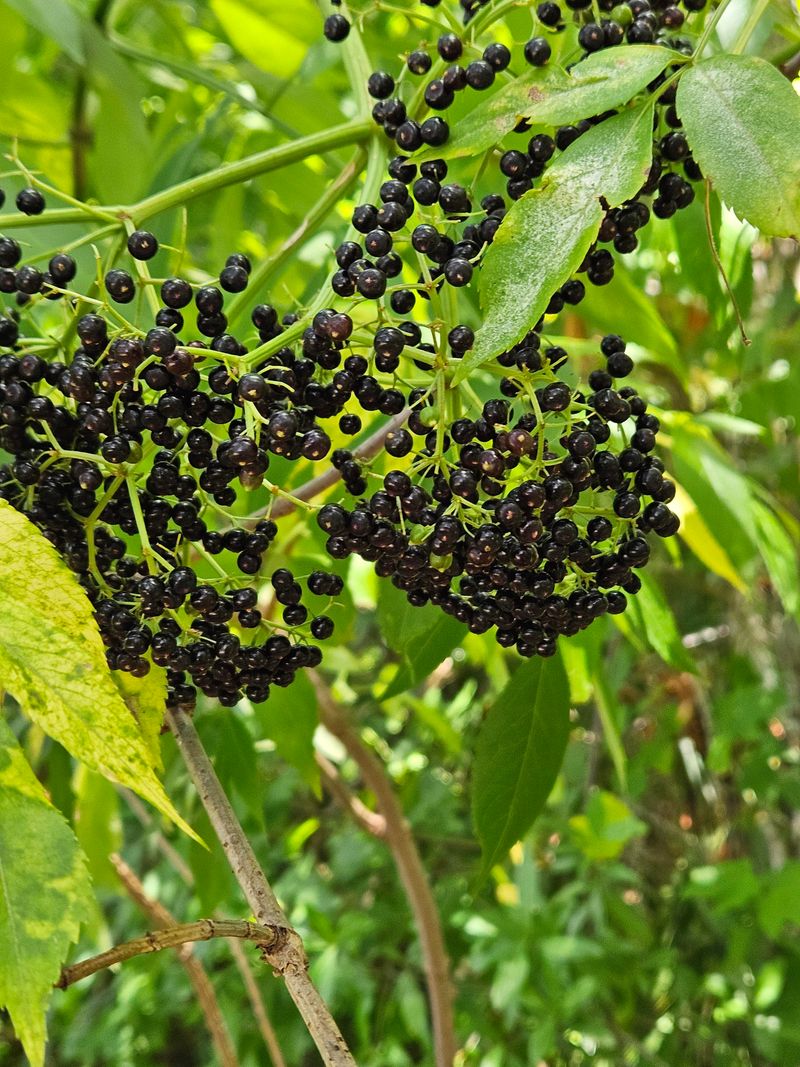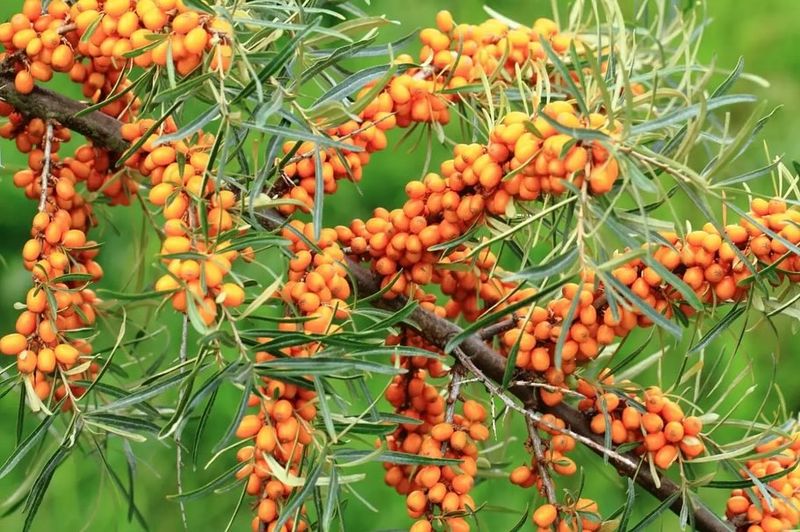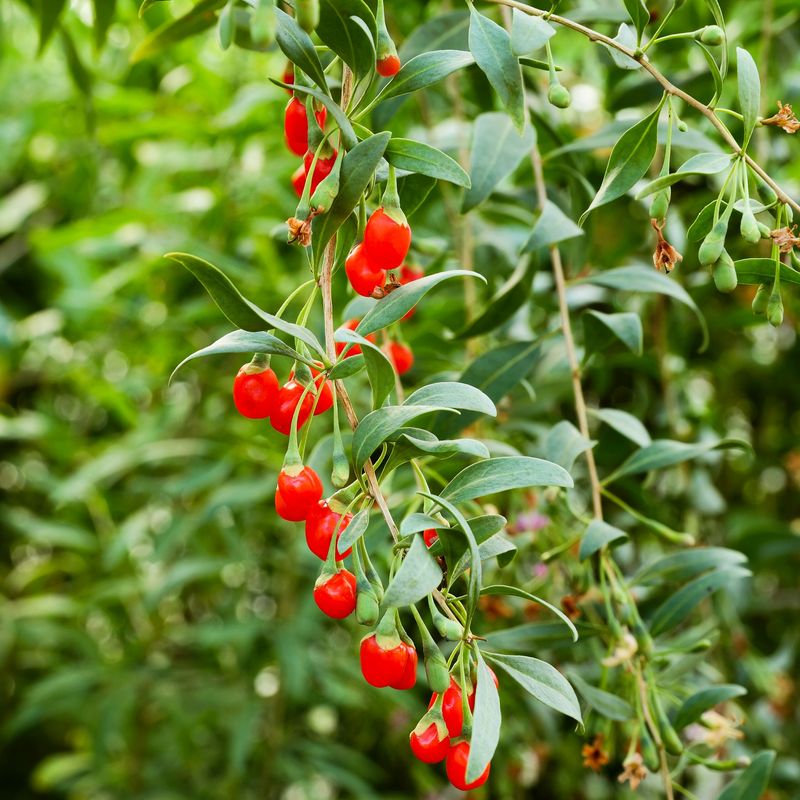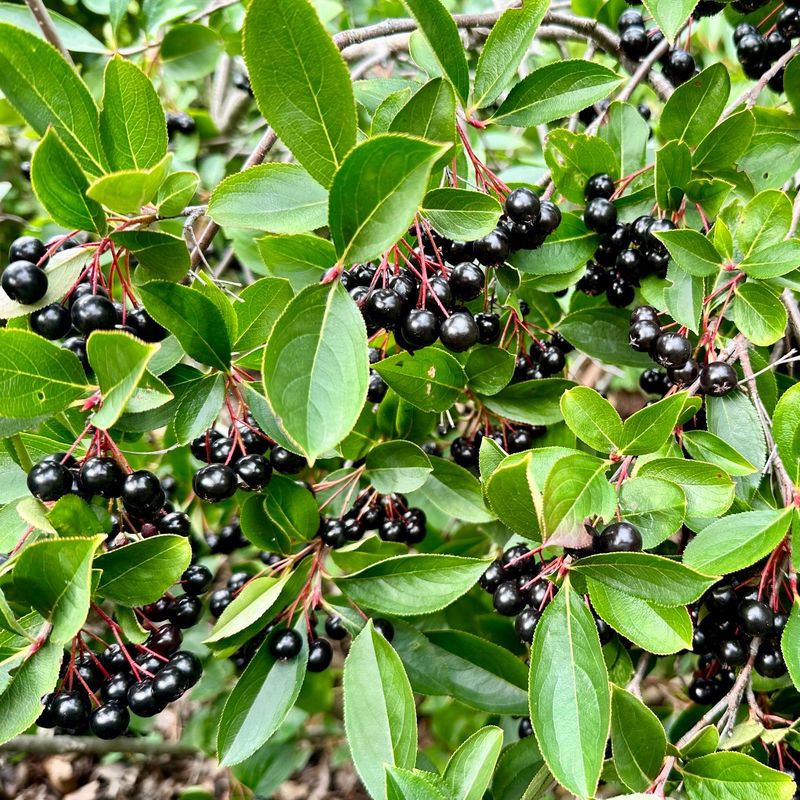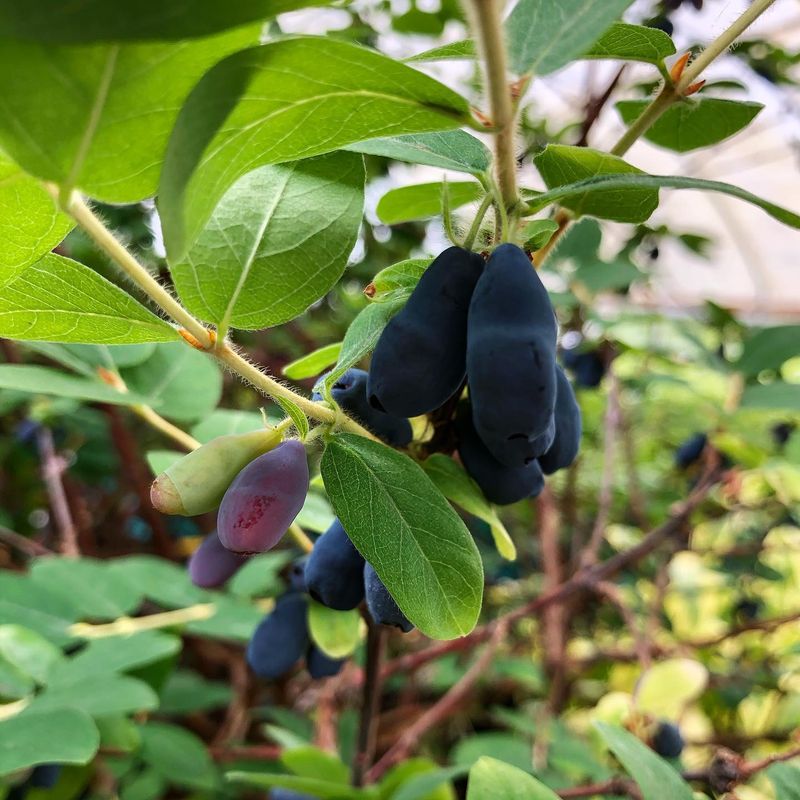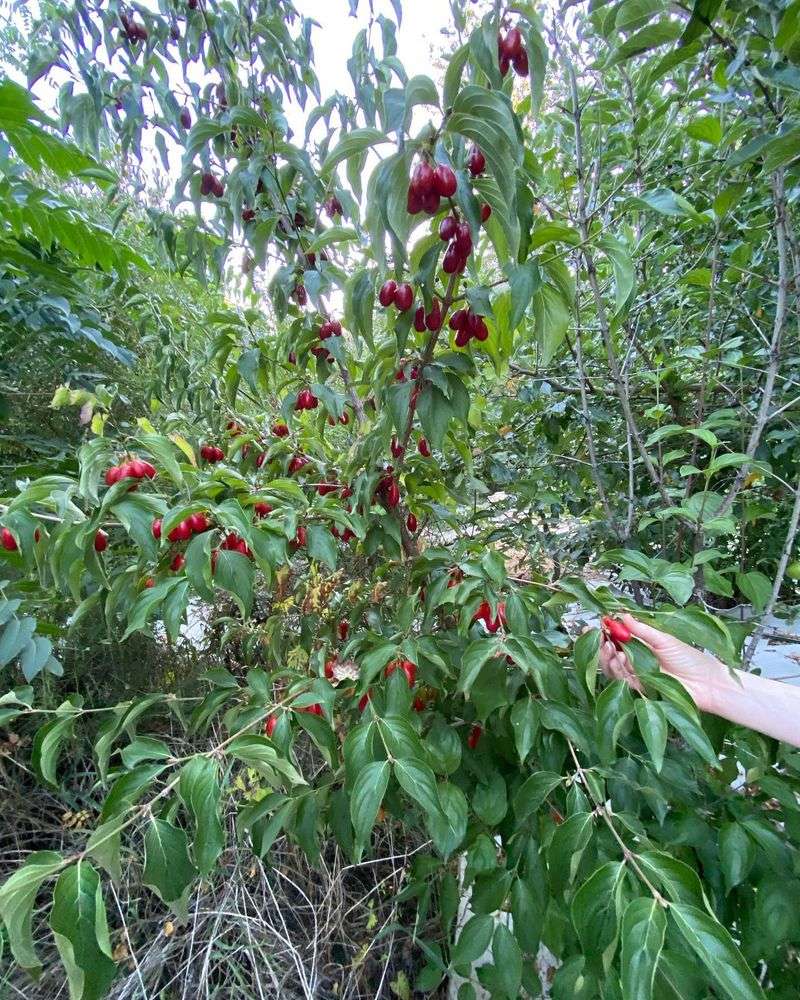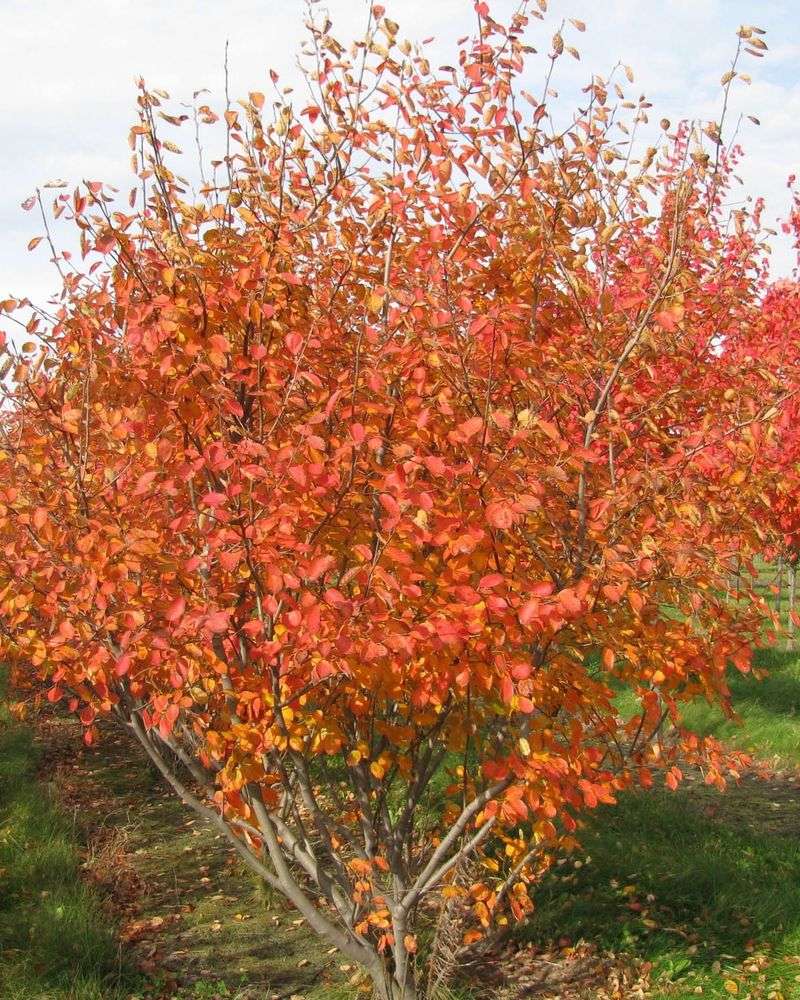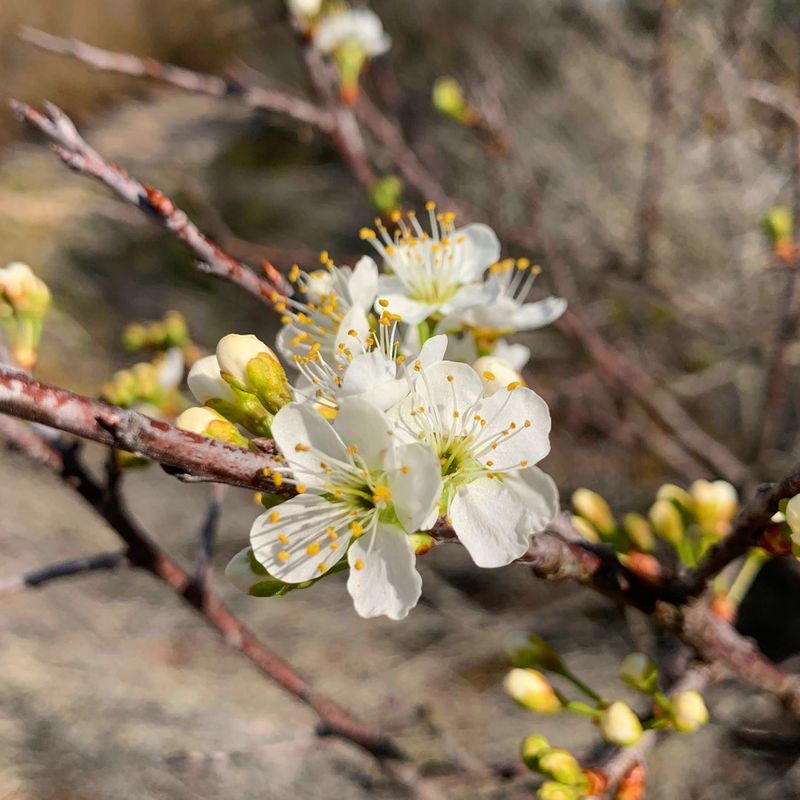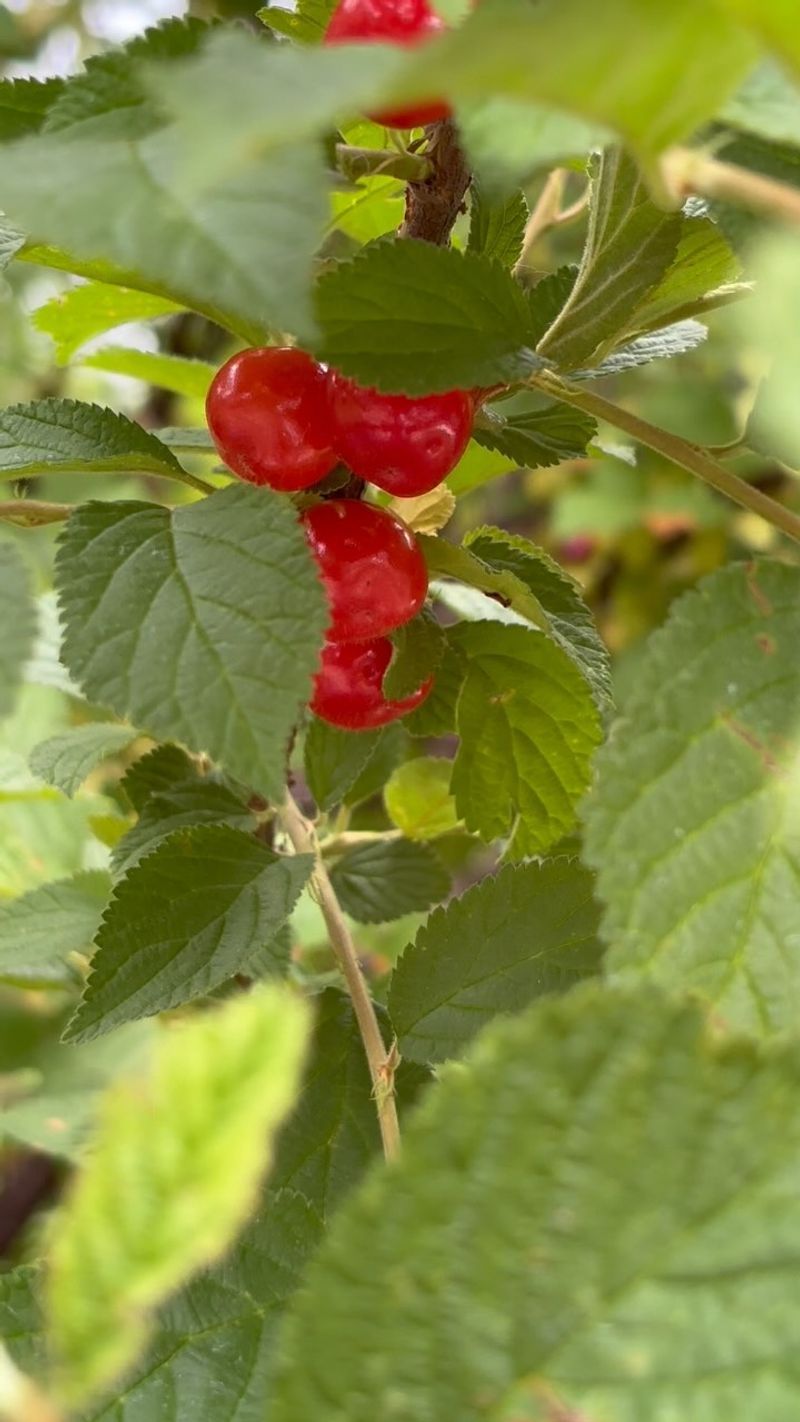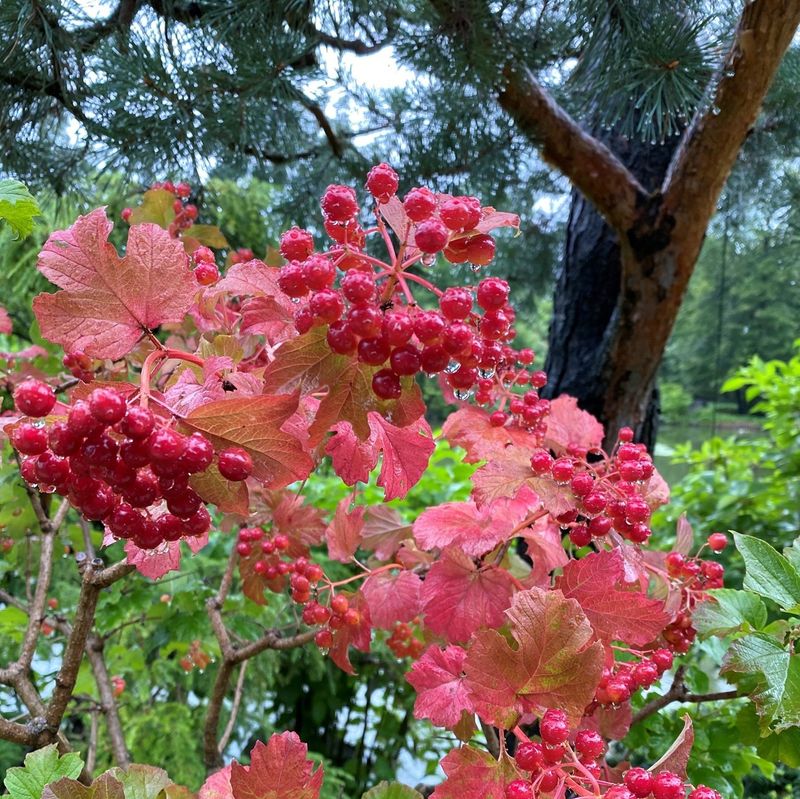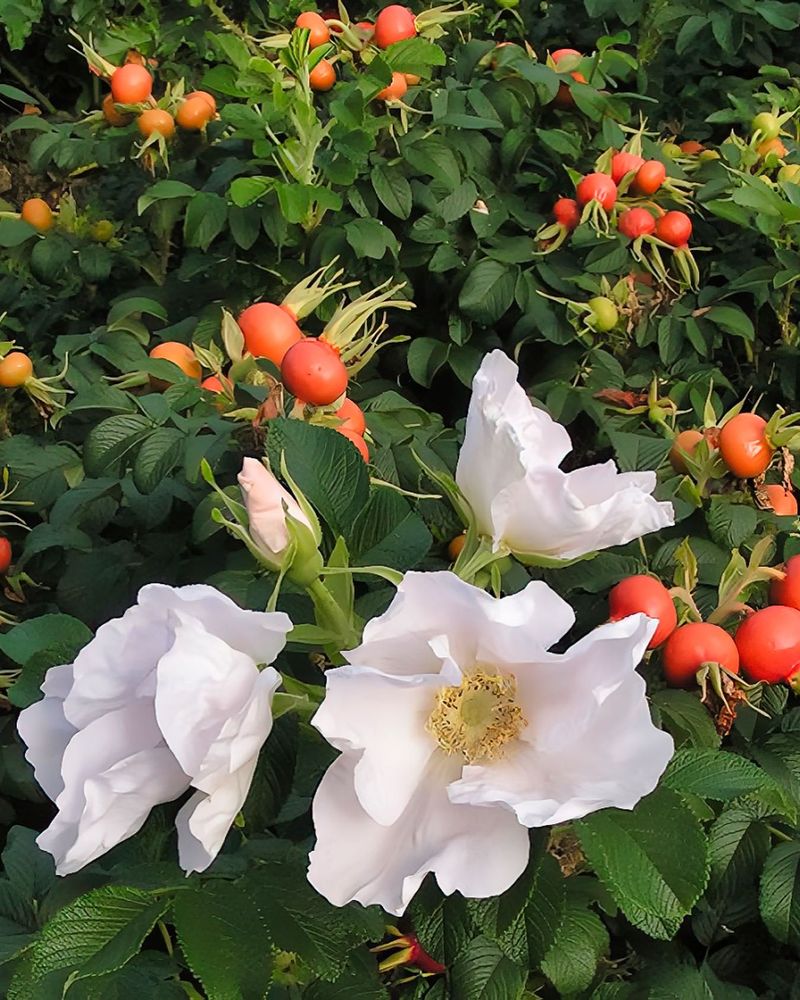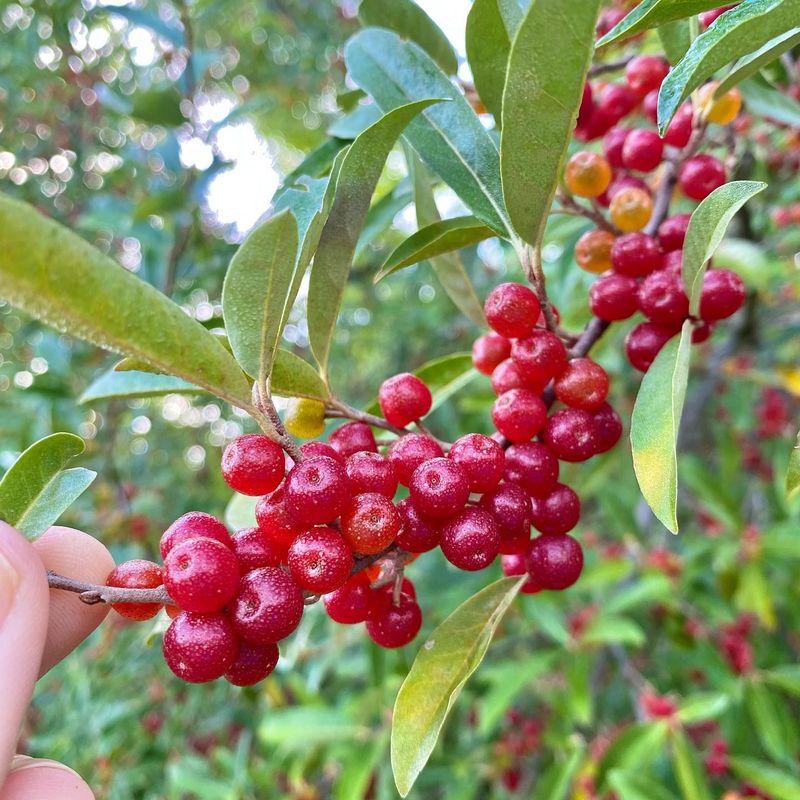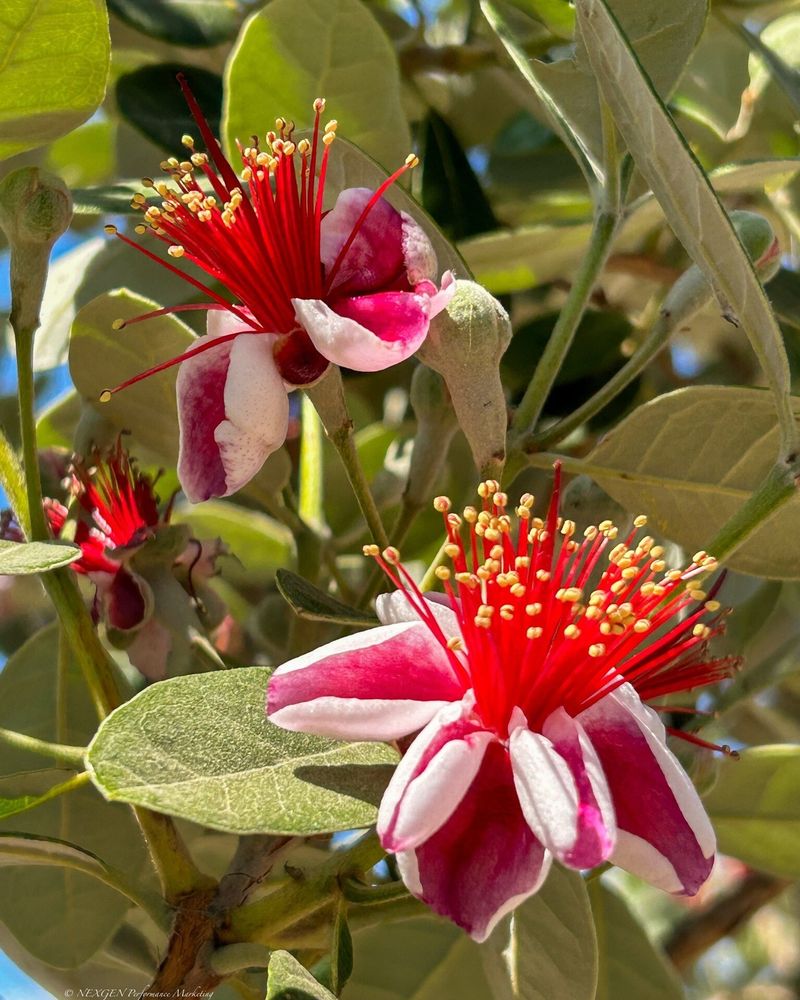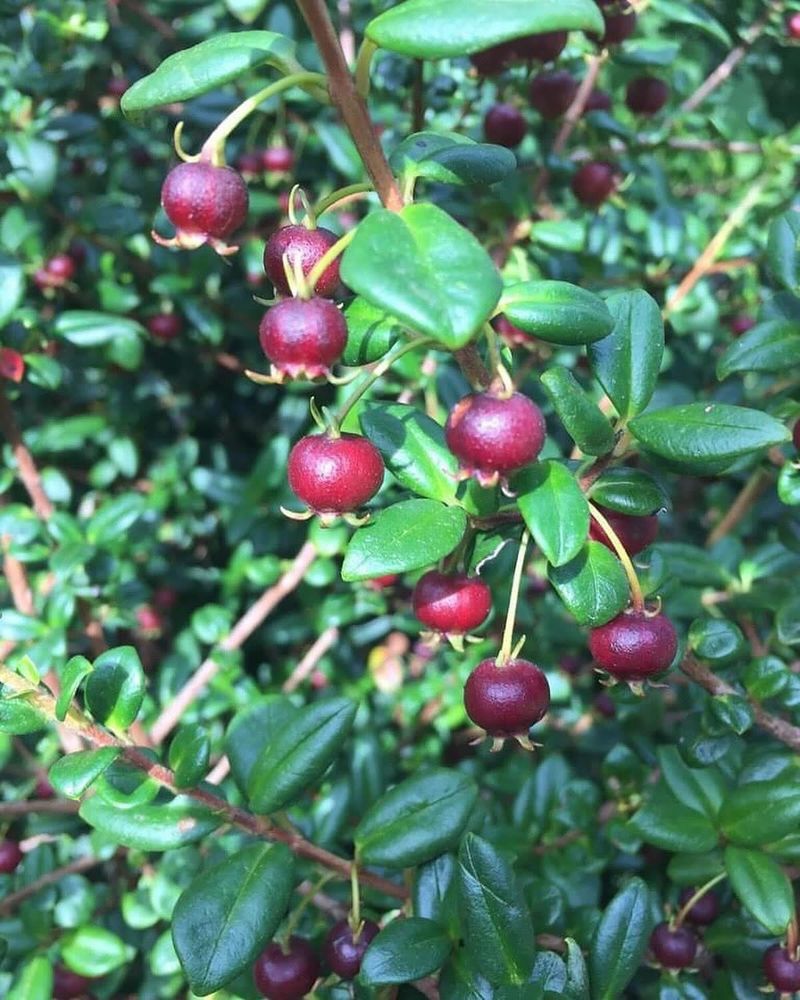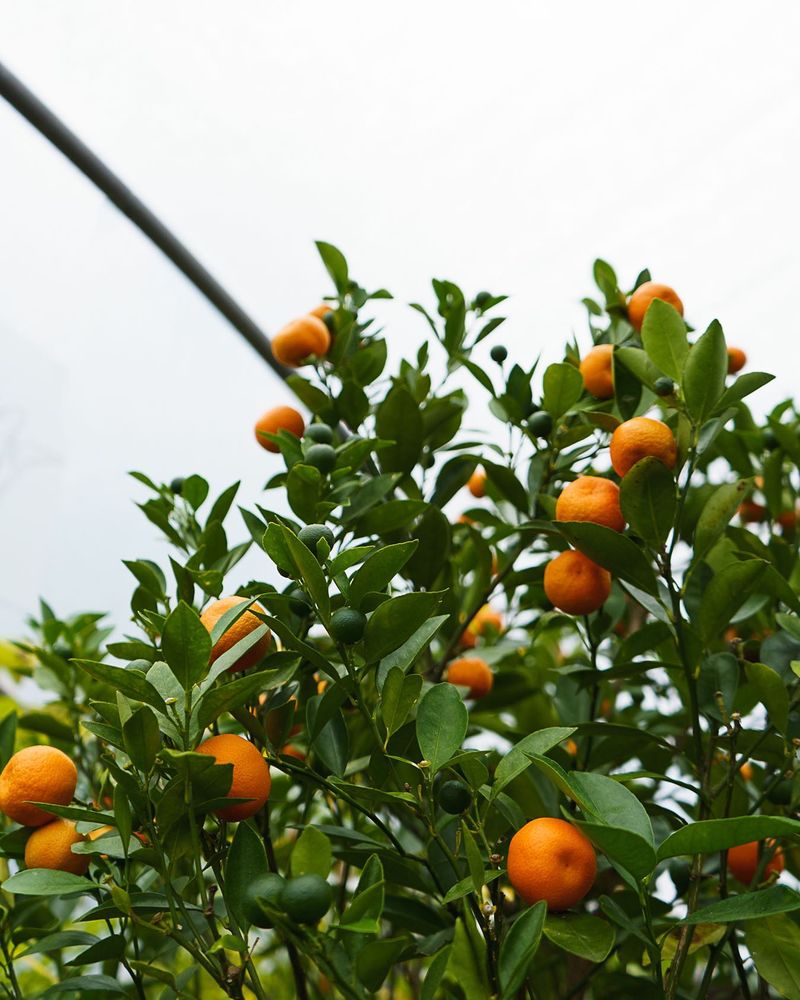Fences and hedges don’t have to be all leaves and no flavor. These 20 fruit-bearing shrubs pull double duty—adding beauty to your borders while serving up something tasty.
I’ve grown a few of these myself, and there’s nothing better than picking berries right off the hedge. They’re tough, good-looking, and surprisingly easy to grow with the right care.
Let’s turn those plain edges into something delicious and full of life!
1. Blueberry
These compact bushes create stunning hedges while producing sweet summer berries. Pair different varieties for better pollination and extended harvest seasons. Most varieties need acidic soil with a pH between 4.5-5.5 to thrive.
Add plenty of peat moss or sulfur to lower your soil pH if needed. Blueberries prefer consistent moisture but hate wet feet, so good drainage is essential. Prune in late winter to encourage vigorous new growth where most fruit is produced.
2. Blackberry
Hardy and productive, thornless blackberry varieties make excellent fence covers that reward you with juicy berries. Modern cultivars like ‘Triple Crown’ and ‘Chester’ offer improved flavor without the painful thorns of wild varieties. Train canes along a fence for easy harvesting.
First-year canes produce leaves while second-year canes bear fruit. Prune out the older canes after fruiting to maintain vigor. Blackberries prefer full sun but can tolerate partial shade, though this may reduce your harvest.
3. Raspberry
Perfect for creating informal hedges, raspberries spread naturally to form dense barriers. Fall-bearing varieties like ‘Heritage’ produce two crops yearly – a small summer harvest and a larger fall crop. Keep them contained with regular maintenance to prevent unwanted spreading.
Canes live for two years, with most varieties fruiting on second-year growth. Plant in well-drained soil amended with compost. Space plants 2-3 feet apart for a continuous hedge. Support with a simple trellis system for easier harvesting and better air circulation.
4. Gooseberry
Surprisingly tough and adaptable, gooseberry bushes make excellent formal or informal hedges. Their branches feature small thorns that deter unwanted visitors while producing tart-sweet berries perfect for jams and pies. European varieties typically offer larger fruits than American types.
Plant in full sun to partial shade in cooler climates. Gooseberries tolerate a range of soil conditions but prefer slightly acidic, well-drained ground. Prune annually to maintain an open center, improving air circulation and reducing disease issues like powdery mildew.
5. Currant
Available in red, black, and white varieties, currant bushes form attractive hedges with spring flowers and summer berries. Black currants offer the strongest flavor and highest vitamin C content. Red and white types tend to be sweeter and excellent for fresh eating.
Currants tolerate partial shade better than most fruiting shrubs. They prefer cool, moist conditions and struggle in hot climates. Space plants 3-4 feet apart in rich, well-drained soil. Prune annually to remove older wood, as fruits form primarily on 2-3 year old branches.
6. Elderberry
Growing up to 12 feet tall, elderberries create impressive flowering hedges with medicinal dark purple berries. Varieties like ‘Adams’ and ‘York’ produce larger fruit clusters than wild types. The fragrant white flower clusters in spring are almost as valuable as the berries.
Plant at least two different varieties for better pollination. Elderberries prefer moist, rich soil but adapt to many conditions once established. The berries must be cooked before eating, as raw elderberries can cause stomach upset. Prune heavily in early spring to encourage vigorous new growth.
7. Sea Buckthorn
Featuring silvery foliage and brilliant orange berries, sea buckthorn creates stunning ornamental hedges with superfood benefits. The tart berries remain on branches through winter, providing food for birds and visual interest in the snow. Native to coastal areas, it tolerates salt spray and poor soils.
You’ll need both male and female plants for berry production. Plant one male for every 6-8 females. Sea buckthorn fixes nitrogen in the soil, improving conditions for neighboring plants. Its thorny nature makes it excellent for security hedges while the deep roots help prevent soil erosion.
8. Goji Berry
Also known as wolfberry, this superfood shrub grows 4-7 feet tall and produces small red berries with remarkable health benefits. Young shoots and leaves are edible too, often used in stir-fries in Asian cuisine. The purple flowers attract beneficial pollinators throughout the growing season.
Goji berries thrive in well-drained soil and full sun. They’re drought-tolerant once established and can handle poor soils. Prune vigorously in early spring to encourage bushy growth and better fruit production. Plants typically begin bearing significant harvests after their third year.
9. Aronia
Often called chokeberry, aronia forms dense hedges with white spring flowers, glossy summer foliage, and purple-black berries. Fall brings spectacular red foliage that rivals burning bush. Birds generally leave the astringent berries alone until winter, ensuring your harvest remains intact.
Extremely cold-hardy and disease-resistant, aronia thrives in zones 3-8. It adapts to wet soils better than most fruiting shrubs. The tart berries are packed with antioxidants and make excellent juices, jams, and wines when sweetened. Space plants 3-4 feet apart for a solid hedge.
10. Honeyberry
Looking like elongated blueberries, honeyberries (or haskap) ripen weeks before strawberries, providing the first fruits of spring. Their flavor combines blueberry and raspberry notes with a hint of elderberry. The blue-green foliage creates an attractive informal hedge year-round.
Plant at least two different varieties for cross-pollination. Honeyberries are incredibly cold-hardy, surviving temperatures to -40°F. They prefer slightly acidic soil but adapt well to various conditions. Minimal pruning is needed – simply remove dead or damaged branches in late winter.
11. Cornelian Cherry
Actually a species of dogwood, this multi-season shrub produces bright yellow flowers in early spring before most plants wake up. The glossy red fruits resemble small elongated cherries and make excellent preserves and syrups. Mature plants can reach 15 feet tall if left unpruned.
Extremely long-lived, some specimens have thrived for over 100 years. They tolerate clay soils and partial shade better than many fruiting shrubs. The fruits ripen in late summer, turning from yellow to red when fully ripe. Birds love them, so harvest promptly or use netting.
12. Serviceberry
Also called juneberry or saskatoon, serviceberry offers white spring flowers, summer berries, and brilliant fall foliage. The sweet purple-black fruits taste like a blend of cherry and almond, perfect for fresh eating or preserves. Multi-stemmed growth creates natural privacy screens.
Native to North America, serviceberries support local wildlife while providing human harvests. They adapt to most soil types except very wet conditions. Most varieties reach 15-25 feet tall but respond well to pruning. Space plants 4-6 feet apart for hedges, closer for denser screening.
13. Beach Plum
Native to coastal areas, beach plum creates dense, salt-tolerant hedges with pretty white flowers and purple fruits. The plums make exceptional jams and jellies with a unique wild flavor. Growing naturally in sandy, poor soils, they’re perfect for challenging sites.
Beach plums typically reach 6 feet tall and wide. They’re drought-resistant once established and require minimal care. Plant in full sun for best fruiting. The thorny branches make excellent security barriers while the spring flowers support native pollinators.
14. Nanking Cherry
Covered in white flowers each spring, Nanking cherry forms dense hedges up to 10 feet tall with small tart-sweet red cherries. The fruits ripen in early summer, perfect for fresh eating, pies, and preserves. Birds love them too, so be prepared to share your harvest.
Extremely cold-hardy and drought-tolerant once established, these shrubs thrive in zones 2-7. They prefer well-drained soil and full sun but tolerate partial shade. Minimal pruning is required – simply remove damaged branches and thin occasionally to maintain airflow through the center.
15. Highbush Cranberry
Not a true cranberry but a viburnum, this native shrub creates magnificent hedges with white spring flowers, red fall berries, and purple autumn foliage. The tart red berries remain on branches through winter, providing food for birds and visual interest during snow season.
Growing 8-12 feet tall, highbush cranberry thrives in moist soils and tolerates partial shade. The berries contain a single large seed and make excellent sauces and jellies. Choose American varieties (Viburnum trilobum) rather than European types for better-tasting fruits.
16. Rugosa Rose
Creating impenetrable thorny barriers, rugosa roses produce fragrant flowers followed by large edible rose hips rich in vitamin C. The wrinkled, disease-resistant foliage stays attractive all season without spraying. Salt-tolerant varieties thrive in coastal gardens where other plants struggle.
Rose hips can be harvested after the first frost when they turn bright orange-red and slightly soft. Use them for teas, jellies, and syrups. Rugosa roses require little maintenance beyond occasional removal of dead wood. They spread gradually through suckers, creating increasingly dense hedges over time.
17. Autumn Olive
Featuring silvery foliage and speckled red berries, autumn olive creates fast-growing hedges with edible harvests. The berries ripen in fall with a sweet-tart flavor perfect for jams and fruit leathers. Their high lycopene content exceeds that of tomatoes.
Note that autumn olive can be invasive in some regions, so check local regulations before planting. Choose improved cultivars like ‘Amber’ or ‘Ruby’ for larger, sweeter fruits. The nitrogen-fixing roots improve soil quality for neighboring plants. Prune regularly to maintain size and prevent unwanted spreading.
18. Pineapple Guava
Evergreen with silvery-green leaves, pineapple guava (feijoa) creates stunning formal hedges in warmer climates. The unusual flowers feature edible red and white petals with a sweet flavor. Later, the aromatic egg-sized fruits taste like a blend of pineapple, guava, and mint.
Perfect for zones 8-10, these shrubs tolerate drought once established. They respond beautifully to pruning, making them ideal for shaped hedges. Plant multiple varieties for better cross-pollination and fruit production. Mature plants typically reach 10-15 feet tall but can be maintained much smaller.
19. Chilean Guava
Known as the strawberry myrtle, this compact evergreen shrub produces tiny berries with extraordinary flavor – like strawberry candy with spice notes. Queen Victoria reportedly had them shipped to England because she loved them so much. The dense growth habit creates natural miniature hedges.
Perfect for smaller gardens, Chilean guava typically grows just 3-4 feet tall. It prefers acidic soil similar to blueberries. The glossy foliage remains attractive year-round in zones 8-10. In colder areas, grow in containers and protect during winter. White bell-shaped flowers in spring attract pollinators.
20. Calamondin
This compact citrus creates beautiful evergreen hedges with fragrant white flowers and small orange fruits year-round. The tangerine-like fruits are quite sour but make exceptional marmalades and flavored vinegars. Their thin skins make them perfect for preserving whole.
Hardy to zone 9 outdoors, calamondin can be grown in large containers in colder regions and brought indoors for winter. They prefer well-drained soil and regular feeding during the growing season. Prune after fruiting to maintain shape and encourage dense growth. The glossy leaves remain attractive even when not flowering or fruiting.

